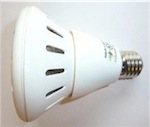The California Energy Commission started issuing building energy efficiency standards (codified in Title 24, Part 6 of the California Code of Regulations) since 1978. Updates are made periodically as newer technologies and products become available, and new energy efficiency requirements change. The latest version, commonly known as the 2013 Title 24, was recently completed and will be effective as of July 1, 2014.
Title 24 code applies to new homes as well as remodels (additions and alterations in Title 24’s terminology). In general, the code attempts to steer homes to better energy efficiency via adopting a set of measures. The code also gets stricter with each new version. Some of the new approaches in the 2013 version and changes from the previous version are high lighted here.
- Exterior Insulation. Increase the amount of roof, attic, wall, and underfloor insulation
- Cool Roof. Replace with this new class of roofing material that reflects more solar heat away from the house and emits less heat into the house. See cool roof for more information.
- Duct insulation. Increase the amount of duct insulation to reduce heat loss along the heating/air conditioning duct system.
- Hot water pipe insulation. Increase the amount of insulation to reduce heat loss.
- Windows. Use less thermally conductive, less solar heat transmitting products. See windows for more information.
- Heating, Air Conditioning and Ventilation (HVAC) and Hot Water Heaters. Use more energy efficient units.
Similar to most standards documents, this Title 24 is long, complicated, and full of details. For remodels, there are also numerous exceptions or exemptions. Furthermore, there are different ways to meet code compliance. It is best to engage a certified energy consultant when developing a remodel plan. In some cases, a Home Energy Rating System (HERS) rater is required to certify the plan. The complete set of documents can be found in CA 2013 Title 24.








